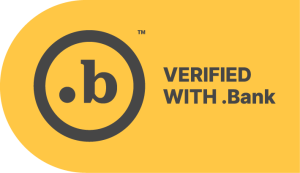While we all want to do what is best for the planet, it can be hard to know where to start. You may recycle, compost food waste, carpool to work and turn up your thermostat when you leave the house, but maybe you are looking for other ways to make your life more sustainable.
If you’ve been searching for ways to make your financial situation more environmentally friendly, you’ve likely seen terms like “green banking” or “eco-friendly banking.” While these terms sound good on the surface, you may be wondering what they look like in practice.
Let’s explore how your local bank may be trying to reduce its carbon footprint today.
Four Environmentally Friendly Practices Your Bank Should Be Following
Here are some ways your local bank may be working towards being an environmentally friendly bank.
1. Paperless statements
One of the easiest ways many banks are trying to reduce their carbon footprint is by moving to digital, paperless statements. In fact, some banks may now charge a bank statement fee if you choose to receive paper statements. While completely removing paper from the financial industry is a challenging endeavor due to the number of documents exchanged, your choice to go paperless can help your bank, your bottom line and the planet.
Not only does paper require a large number of resources to produce, but its costs also quickly add up for banks, which may then be passed on to you through statement fees and other service fee increases.
2. Online banking
The friendly team at your local bank is always happy to see you when you stop by, and it’s nice to have a local bank location you can visit if you need more in-depth service or help with your account. However, you can perform many banking functions online. Community Point Bank’s mobile app and online banking service are great ways to carry out check deposits, account transfers, bill payments and more.
Utilizing online banking services can help you reduce trips to the bank, which can reduce your personal carbon footprint.
3. Energy-efficient building and maintenance practices
Your local bank most likely utilizes state-of-the-art energy-efficient lighting, appliances and HVAC to lower energy costs. Plus, a local bank can save energy by training its team on the latest conservation efforts. Energy-efficient building, maintenance and habits are important foundational steps to becoming an environmentally friendly bank.
4. Local investment
One way a local bank is more environmentally friendly than larger, competitive banks is by reinvesting back into the area. Local banks are more likely to lend to local businesses, which can help keep more businesses local, therefore reducing the need for long drives or commutes for work and everyday services and products.
Find Out Why Banking Locally Is Banking Better
At Community Point Bank, we are always looking for ways to improve our customer experience. One way we do this is by reducing our energy consumption and passing these savings on to you. If you’re ready to get the features and services of a large financial institution with the friendly and helpful service of your hometown bank, look no further than Community Point Bank.
Apply to open a new deposit account or obtain a loan online today or visit one of our three branches to get started. We can’t wait to see you soon.




